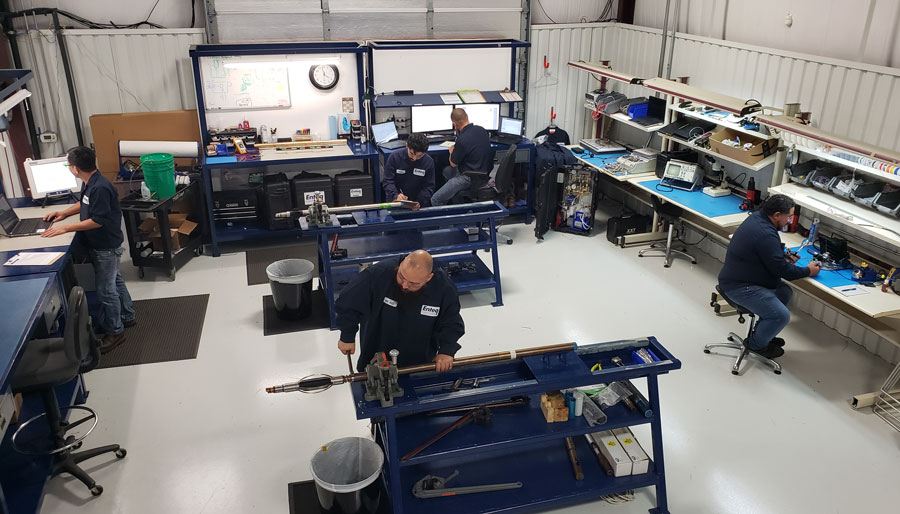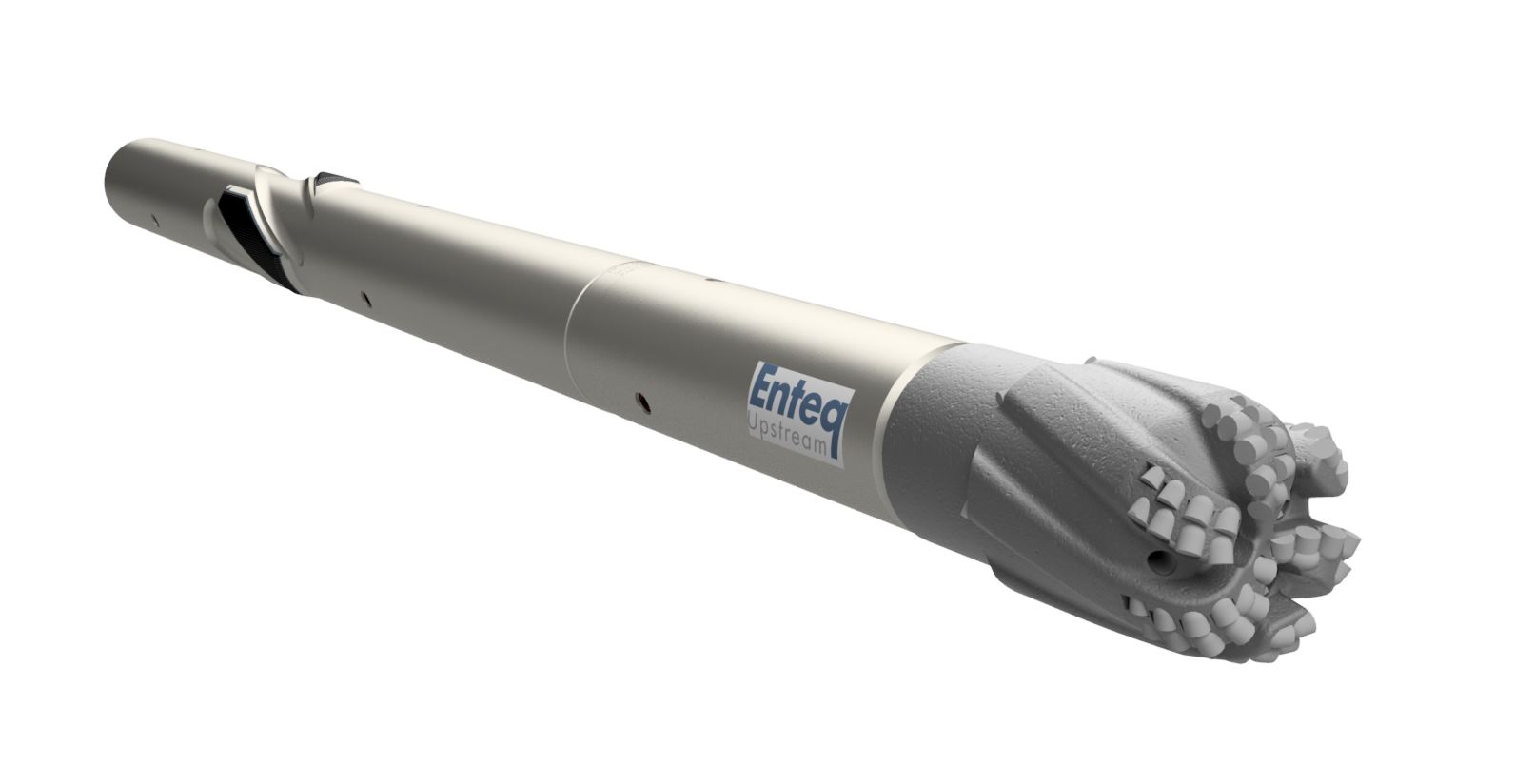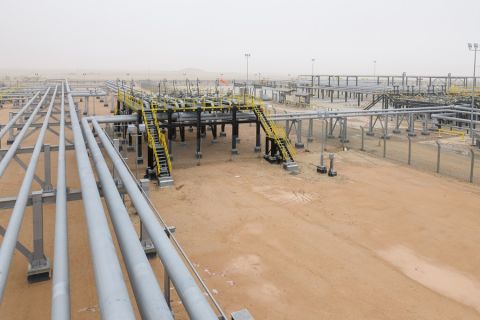Presented by:

Editor's note: This article appears in the new E&P newsletter. Subscribe to the newsletter here.
Enteq Upstream is an independent U.K. and Houston-based engineering firm that provides high-temperature MWD solutions. The company specializes in directional drilling technology and has recently released its SABER tool, a rotary steerable system (RSS) design suitable for high-temperature applications.
In an exclusive interview with E&P, Product Director Neil Bird shares his insights on the new direction in directional drilling and offers an overview of the current sector and what alternative technologies are required to drive the sector forward.
E&P: What challenges are your clients currently facing with traditional RSS design?

Enteq Upstream
Bird: The energy industry of 2021 looks very different compared to anything that’s come before. With the energy transition as a backdrop, a lower-for-longer oil price environment has forced both operators and service companies to squeeze their operations for every ounce of efficiency they can. The geography of the industry is changing too. The Middle East remains a juggernaut and the U.S. shale strength continues, but around the world operators are looking again at previously unattractive or uneconomic plays and reevaluating their feasibility. To make these plays economic means keeping an iron grip on the cost per barrel. In that respect, there is a focus to improve reliability and reduce operating costs of RSS operations. Traditional pad-and-piston RSS designs by nature of their design have limitations; they are prone to excessive wear, which eventually inevitably entails downtime and/or an increase in costs. In a competitive industry with downtime as a major performance metric, that’s not just frustrating—it’s damaging, both to reputation and the bottom line.
E&P: What are the advantages of at-bit steering, and why can't traditional RSS achieve those same goals?
Bird: The answer is to take a new direction for directional drilling, omitting pads and pistons in favor of a simple, stronger collar and decoupling the steering mechanism from damaging torsional vibration. This is achieved by using internal hydraulic pressure differentials to create side-force at the bit for steering, rather than pushing against the borehole wall to change direction. The approach uses Bernoulli’s principle of fluid dynamics, which can commonly be observed in the generation of lift force on hydrofoil, but which has not previously been applied to downhole applications.
The advantage of this approach is that, by internalizing the steering mechanism, a completely plain collar design is possible while achieving true at-bit steering, decoupling the mechanism from torsional vibration, and removing any pads or external profiles that might be subject to excessive wear. Most of all, though, the design is mechanically simpler—elegant, even—compared to anything possible with traditional RSS design, which increases reliability and therefore reduces downtime.

E&P: What changes have you noticed in the directional drilling space, and where do you see the industry moving forward in this regard?
Bird: The current directional drilling market lacks enough independent alternatives. To support a healthy ecosystem of independent service companies with genuine options to choose from, that must be rectified. And that imperative is extending into new markets, too. In the Middle East, national oil corporations are looking to bolster local content and in-country manufacturing. Unlike traditional RSS tools, the independent status and simple engineering of an internally pressure-steered RSS allows for the majority of manufacture and repairs to be conducted in-country, in line with national strategies.
Around the world, independent service companies are underserved by independent RSS options. Giving them that independent alternative—an alternative that offers greater reliability and cost-efficiency—could be genuinely transformative for many. An internal pressure differential steered RSS could elevate many into a new league of contracts.
E&P: So what is the new direction in directional drilling?
Bird: As lateral lengths increase across the industry, there is going to be demand for RSS tools that can achieve smoother bores with lower tortuosity. There is ample room for an alternative to traditional RSS tools without having to rip up the rulebook and start again. The market functions best when it can choose from a range of technologies [and] from a range of suppliers to best suit the job at hand. And that’s the new direction for directional drilling that needs to be taken.
E&P: Does Enteq Upstream have any new technologies in the works? Can you share any R&D updates or case study details?

Bird: In March 2021, Enteq Upstream announced the launch of our novel alternative to traditional rotary steerable system (RSS) for directional drilling: the SABER tool (Steer-At-Bit Enteq Rotary Tool). An evolution of the concept proven and tested by Shell and licensed to Enteq, SABER is now undergoing full system bench testing, with field trials scheduled for August 2021. The SABER tool uses internally directed pressure differentials to steer from the drill bit face, delivering true at-bit geosteering. This mechanically simple design also removes the need for traditional pistons and pads that are susceptible to rapid wear and reliability issues—an approach that can create a smoother and more precise wellbore with easy to manage directional control. SABER is designed to offer a robust, reliable, simple and cost-effective directional drilling alternative to current RSS options.
RELATED CONTENT:
July 5, 2021 Improving Drilling Performance in East Texas Haynesville Shale
Feb. 19, 2021 Digital Downhole Technology Enables Better Drilling Decisions with Data and Power
Feb. 19, 2021 Generating Value from Drill Cuttings
Jan. 26, 2021 Houston-based Drilling Firm Takes on Hard Rock Challenges
Nov. 2, 2020 Patterson-UTI, Matador Resources and Taurex Drill Bits Collaboration Leads to Improved BHA Performance
Recommended Reading
Shipping Industry Urges UN to Protect Vessels After Iran Seizure
2024-04-19 - Merchant ships and seafarers are increasingly in peril at sea as attacks escalate in the Middle East.
Paisie: Crude Prices Rising Faster Than Expected
2024-04-19 - Supply cuts by OPEC+, tensions in Ukraine and Gaza drive the increases.
Report: Freeport LNG Hits Sixth Day of Dwindling Gas Consumption
2024-04-17 - With Freeport LNG operating at a fraction of its full capacity, natural gas futures have fallen following a short rally the week before.
Permian NatGas Hits 15-month Low as Negative Prices Linger
2024-04-16 - Prices at the Waha Hub in West Texas closed at negative $2.99/MMBtu on April 15, its lowest since December 2022.
BP Starts Oil Production at New Offshore Platform in Azerbaijan
2024-04-16 - Azeri Central East offshore platform is the seventh oil platform installed in the Azeri-Chirag-Gunashli field in the Caspian Sea.


